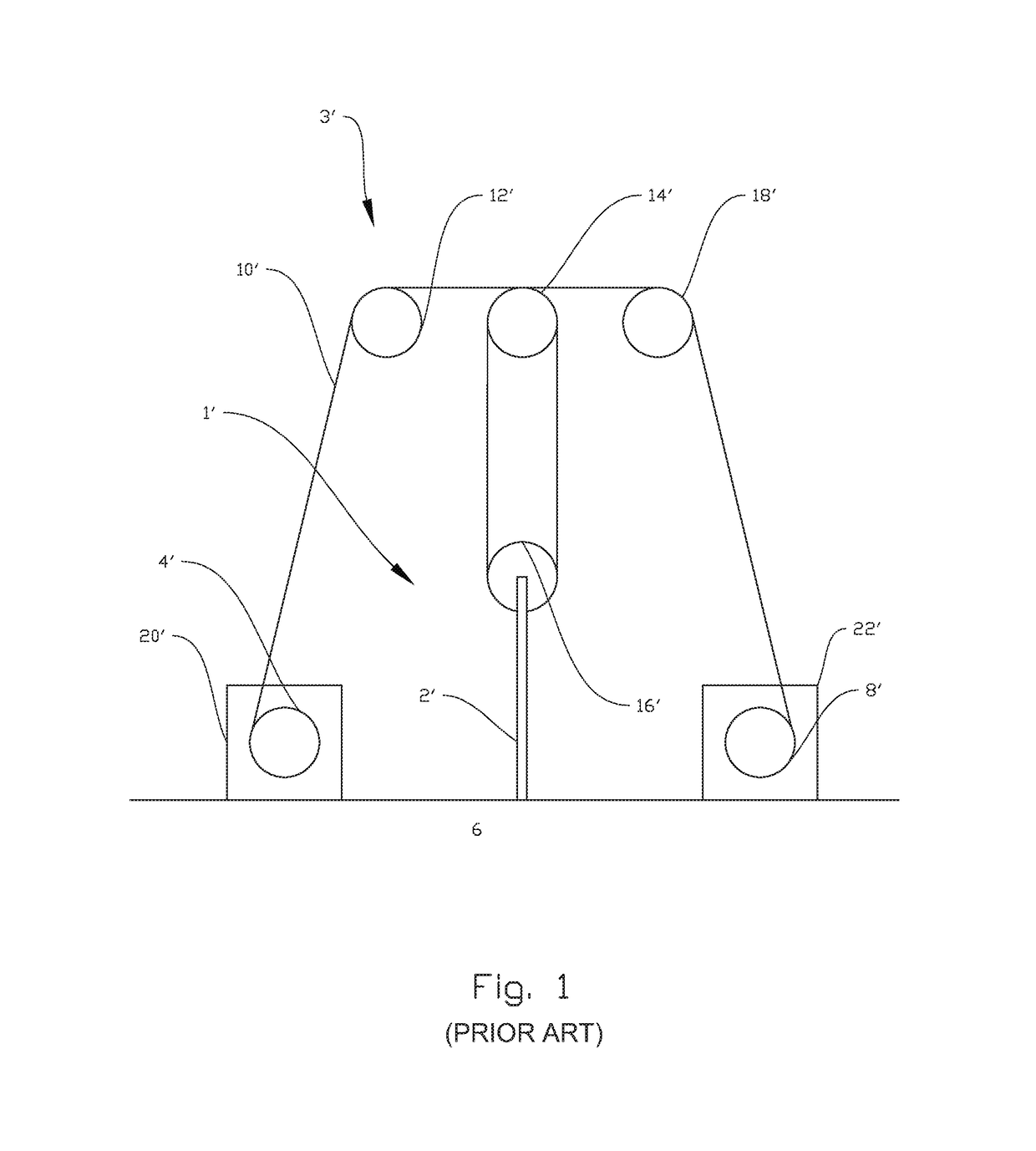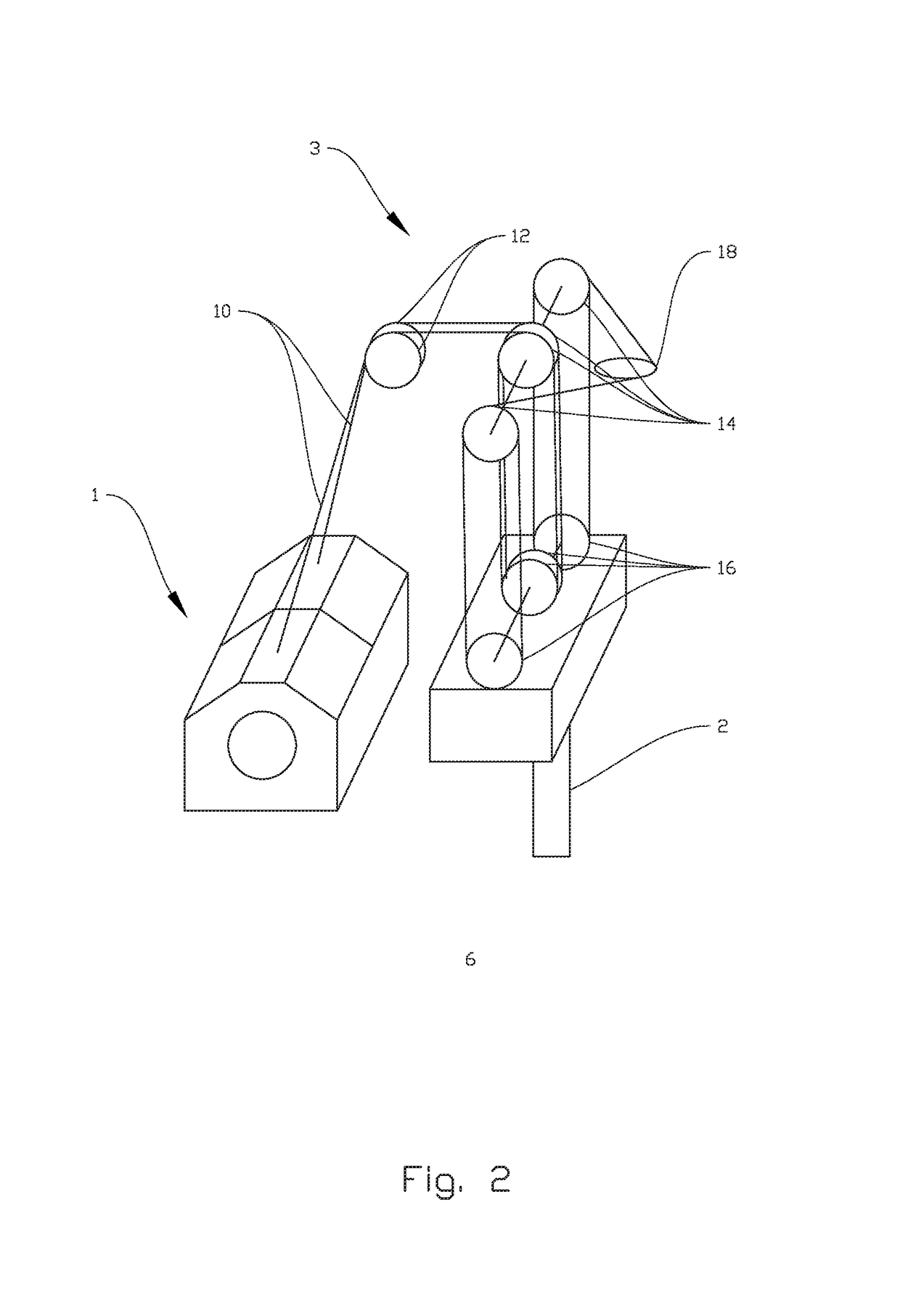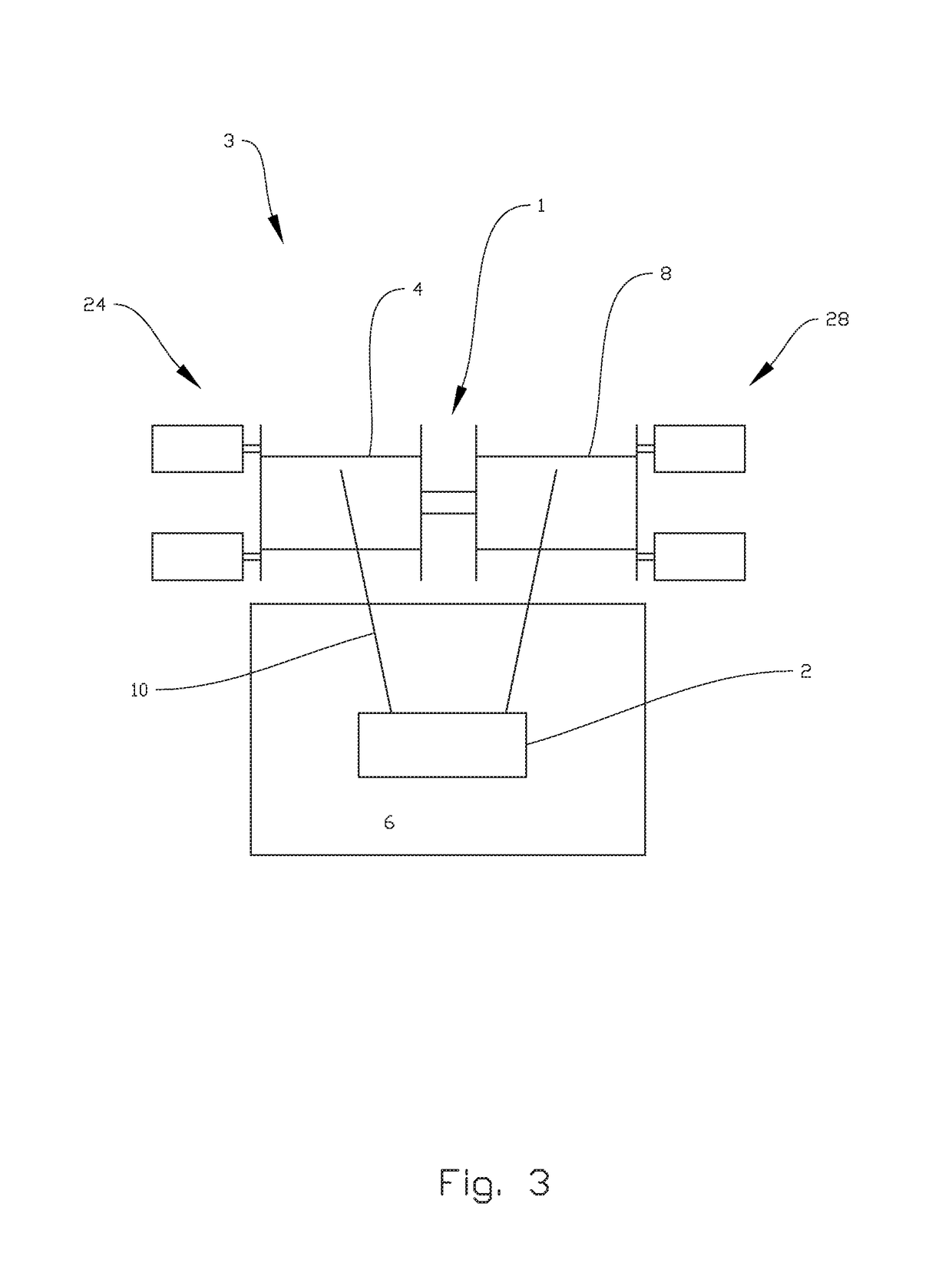Draw-works and method for operating the same
a technology of drawing and working parts, applied in the field of drawing parts, can solve the problems of increasing the cost and weight of the system, reducing the efficiency of the system, so as to achieve the effect of increasing the speed
- Summary
- Abstract
- Description
- Claims
- Application Information
AI Technical Summary
Benefits of technology
Problems solved by technology
Method used
Image
Examples
Embodiment Construction
[0034]In the following, the reference numeral 1 will indicate a draw-works according to the present disclosure, whereas the reference numeral 1′ indicates a draw-works according to the prior art. Identical reference numerals will indicate identical or similar features in the drawings. The figures are shown schematically and simplified and various features in the figures are not necessarily drawn to scale.
[0035]FIG. 1 shows a prior art hoisting system 3′ with a dual draw-works 1′ according to the prior art. An elongated hoisting member 10′ in the form of a wire rope is stored and reeled from a first drum 4′ placed on the left hand side of a derrick 6′ and a second drum 8′ placed on the right hand side of the derrick 6′. The wire rope 10′, is reeled from the first drum 4′ to the second drum 8′, over a first guiding sheave 12′ to a crown block 14′ down to a travelling block 16′, where the wire rope 10′ makes several turns about the crown block 14′ and travelling block 16′ to generate t...
PUM
 Login to View More
Login to View More Abstract
Description
Claims
Application Information
 Login to View More
Login to View More - R&D
- Intellectual Property
- Life Sciences
- Materials
- Tech Scout
- Unparalleled Data Quality
- Higher Quality Content
- 60% Fewer Hallucinations
Browse by: Latest US Patents, China's latest patents, Technical Efficacy Thesaurus, Application Domain, Technology Topic, Popular Technical Reports.
© 2025 PatSnap. All rights reserved.Legal|Privacy policy|Modern Slavery Act Transparency Statement|Sitemap|About US| Contact US: help@patsnap.com



